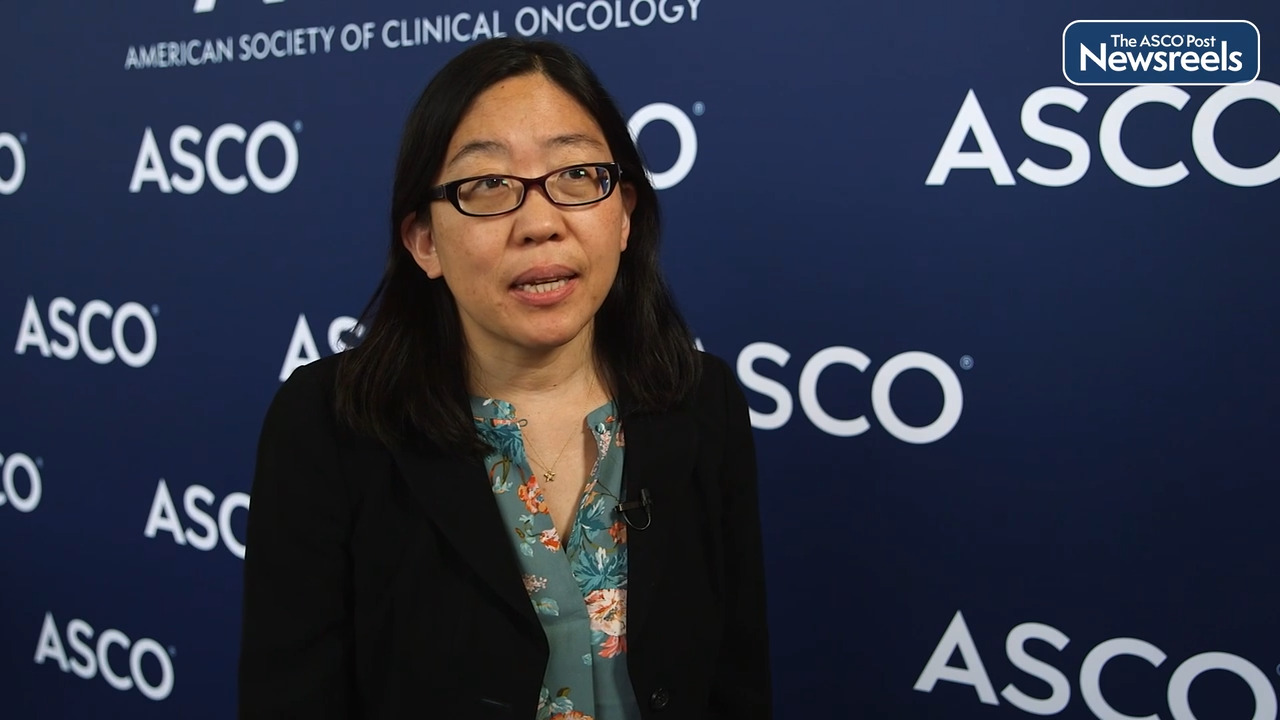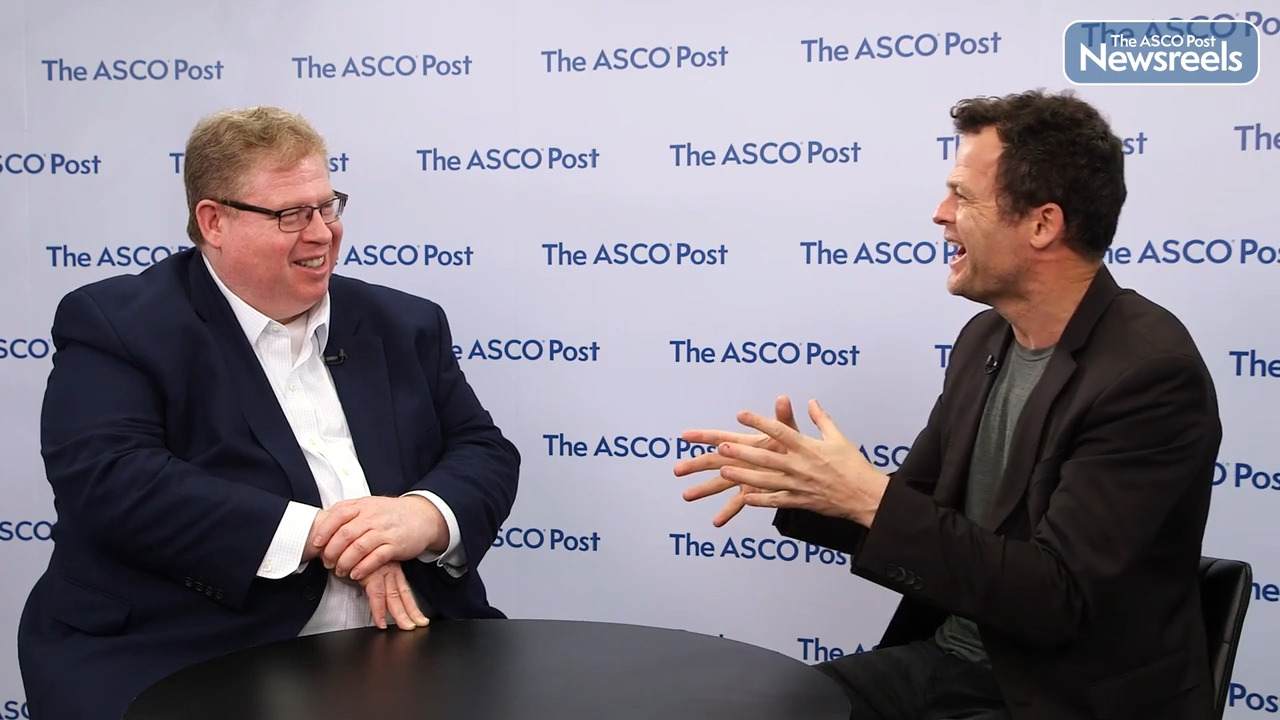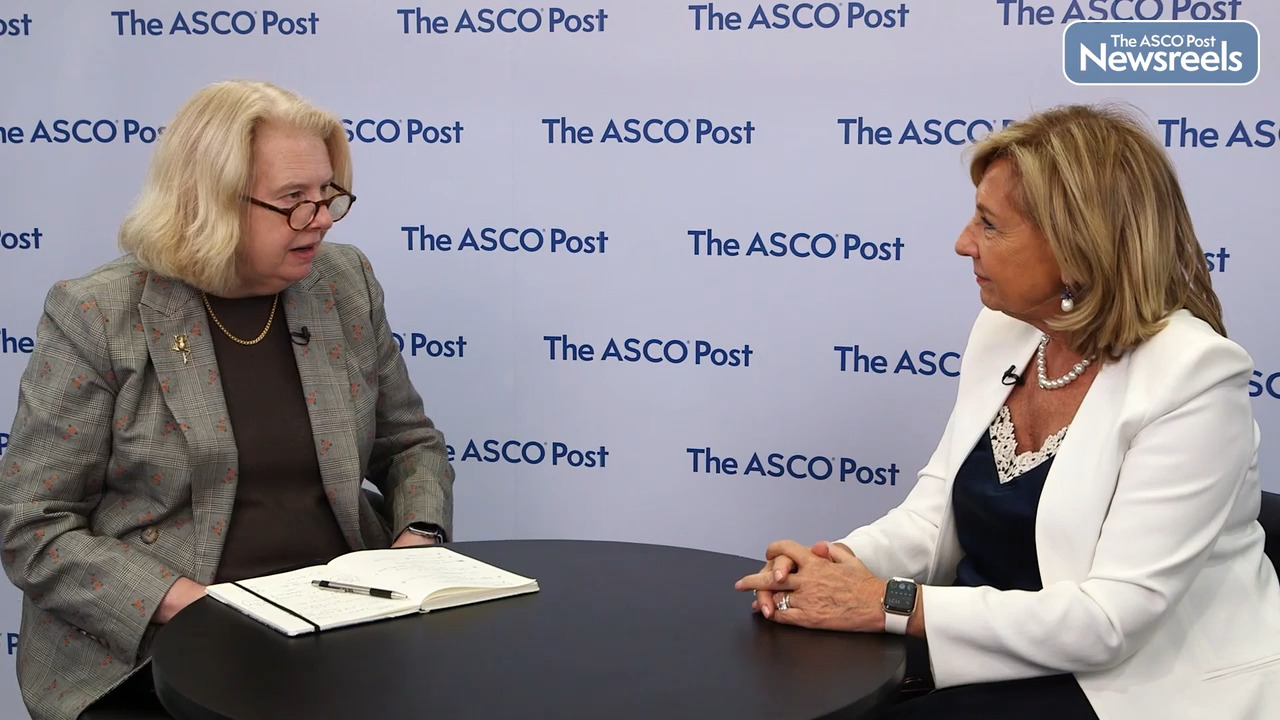Rami Manochakian, MD, on NSCLC: Clinical Implications of Findings on Nivolumab Plus Chemotherapy
2022 ASCO Annual Meeting
Rami Manochakian, MD, of Mayo Clinic Florida, discusses the phase II findings of the NADIM II trial, which confirmed that, in terms of pathologic complete response as well as the feasibility of surgery, combining nivolumab and chemotherapy was superior to chemotherapy alone as a neoadjuvant treatment for locally advanced, resectable stage IIIA non–small cell lung cancer (Abstract 8501).
Transcript
Disclaimer: This video transcript has not been proofread or edited and may contain errors.
The NADIM II Trial is a randomized open label Phase II trial of Neoadjuvant Nivolumab with a regimen, chemotherapy regimen, of carboplatin paclitaxel versus chemotherapy alone, given in three cycles for patients with Stage 3A non-small cell lung cancer. After the three cycle of the neoadjuvant therapy, patient proceeded with surgery, and following surgery, patient received six months of Adjuvant Nivolumab. This study was done by the Spanish Lung Cancer Group Trial. The study primary endpoint was the pathological complete response rate, and secondary endpoint, there was the major pathological response rate, as well as response rate and also adverse events. This study is important, since it's really looking in particular at the Stage 3A patients with non-small cell lung cancer. This is a challenging population.
There is an evolving research and trials testing in particularly this population. We have recently reported CheckMate 816, that led to the approval of Neoadjuvant Nivolumab and chemotherapy in patients from Stage 1B to Stage 3. We have the Adjuvant therapy also approved in a patient with Stage 3. We have the patient who don't undergo resection, and they receive concurrent chemoradiation. So, what this trial is come as a validation to the CheckMate 816, looking in particularly to this patient of a Stage 3A.
The result of the studies were positive. The primary endpoint, which was the pathological complete response rate, was about 36% versus 7% in the patients who did not get the immunotherapy and received the chemotherapy alone. The secondary endpoint, the major pathological response rate, which means the 10% or less of viable tumor in the resected specimen and lymph node, was 52% versus 13%. The overall response rate was 74% versus 48%. And the adverse event, there was some modest increase in the adverse event, in particularly the Grade 3, 4. It was about 24% versus 20%.
This study is, again, comes as a validation for the role of Neoadjuvant chemotherapy and immunotherapy in patient with Stage 3A. This is something that has continued to evolve, as I mentioned earlier, and it's definitely set a standard of care option as one of the option for patients who potentially have resectable Stage 3 non-small cell lung cancer to receive chemotherapy and immunotherapy, followed by surgery and followed by Adjuvant immunotherapy.
Related Videos
The ASCO Post Staff
Sue S. Yom, MD, PhD, of the University of California, San Francisco, discusses a translational analysis from the NRG-HN002 study. This phase II trial established the feasibility of the tumor tissue–modified viral (TTMV) human papillomavirus DNA assay in clinical trial specimens. The goal is to use such an assay to measure tumor volume, levels of TTMV over the course of treatment, and the association of TTMV to treatment outcomes (Abstract 6006).
The ASCO Post Staff
Jonathan E. Rosenberg, MD, of Memorial Sloan Kettering Cancer Center, and Thomas Powles, MD, PhD, of Barts Health NHS Trust, Queen Mary University of London, discuss phase III findings from the KEYNOTE-426 trial, which appear to support the long-term benefit of pembrolizumab plus axitinib for first-line treatment of patients with advanced clear cell renal cell carcinoma (Abstract 4513).
The ASCO Post Staff
Ursula A. Matulonis, MD, of Dana-Farber Cancer Institute, and Nicoletta Colombo, MD, of the University of Milan and the European Institute of Oncology, discuss phase II results on the overall survival benefit of intermittent relacorilant, a selective glucocorticoid receptor modulator, combined with nab-paclitaxel, compared with nab-paclitaxel alone in patients with recurrent platinum-resistant ovarian cancer. A phase III trial comparing intermittent relacorilant plus nab-paclitaxel with investigator’s choice of chemotherapy in primary platinum-refractory disease is ongoing (Abstract LBA5503).
The ASCO Post Staff
Nabil F. Saba, MD, of Winship Cancer Institute of Emory University, discusses new data from a trial of pembrolizumab and cabozantinib in patients with recurrent metastatic head and neck squamous cell carcinoma. The study met its primary endpoint of overall response rate. The regimen was well tolerated and exhibited encouraging clinical activity in this patient population (Abstract 6008).
The ASCO Post Staff
Timothy J. Whelan, MD, of McMaster University and Hamilton Health Sciences, discusses findings from the LUMINA study, which found that women aged 55 or older who had grade 1–2 T1N0 luminal A breast cancer following breast-conserving surgery and were treated with endocrine therapy alone had very low rates of local tumor recurrence at 5 years. These patients, the research suggests, may be able to forgo radiotherapy (Abstract LBA501).





